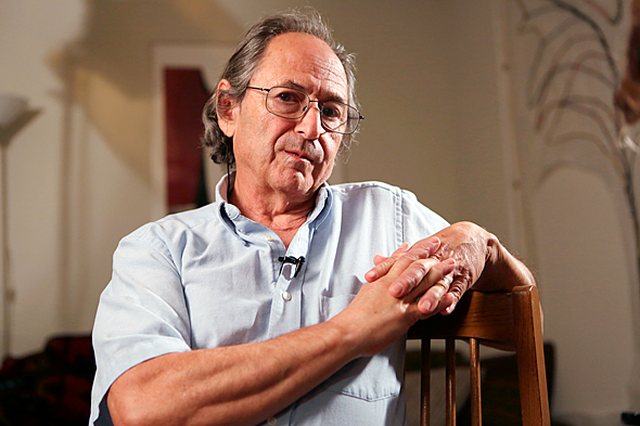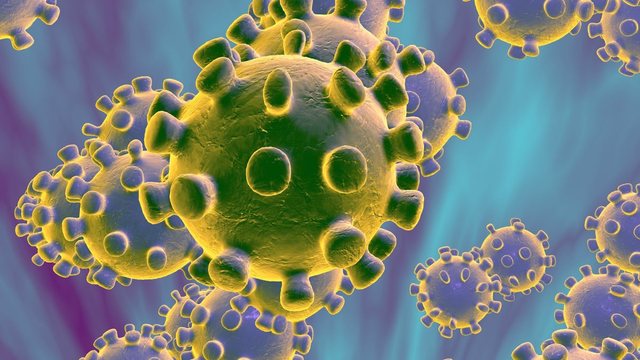
Nobel laureate Michael Levitt, a US-British-Israeli biophysicist who teaches structural biology at Stanford University and spends most of his time in Tel Aviv, suddenly became a household name in China, providing information to the public during the explosion. of coronavirus. Levitt didn't reveal a treatment or cure, he just did what he does best: calculate the numbers. Statistics led him to conclude that, contrary to gloomy forecasts, the spread of the virus would stop.
The soothing messages Levitt sent to his friends in China passed from one person to another, making him a popular subject for interviews in the Asian nation. His predictions turned out to be correct: the number of new cases reported every day began to decline since February 7th. A week later, mortality rates began to drop as well.
He may not be an expert in epidemiology, but Levitt understands calculations and statistics, he said in a telephone interview earlier this week.
The interview was originally scheduled to take place at the Sarona complex in Tel Aviv, where Levitt currently resides. But after he suffered a cold - "not corona," he jokingly said - the interview was conducted over the phone. Although he believes the pandemic will develop its course, Levitt stresses his support for all the security measures currently taken and the need to adhere to them.
Levitt received the 2013 Nobel Prize in Chemistry for "developing multiscale models for complex chemical systems". He has by no means thought to be a prophet who foretells the end of a plague; it happened by accident. His wife Shoshan Brosh is a Chinese art scholar and a curator for local photographers, meaning the couple divide their time between the US, Israel and China. 
When the pandemic broke out, Broch wrote to friends in China to support them. "When they responded to us, describing how complicated their situation was, I decided to take a deeper look at the numbers in hopes of reaching a conclusion," Levitt explained. "The rate of virus infection in Hubei province increased by 30% every day. That's a scary stat. I'm not a flu expert, but I can analyze the numbers and that's exponential growth. At this rate, the whole world should have been infected within 90 days, he said.
But then the trend changed. When Levitt began analyzing the data on February 1, Hubei had 1,800 new cases daily and within six days that number reached 4,700. "And then, on February 7, the number of new infections started to decline linearly and did not stop. A week later, the same thing happened with the death toll. This dramatic change in the curve hit the midpoint and enabled better forecast when the pandemic will end. Based on this, I came to the conclusion that the situation throughout China will improve within two weeks. And, indeed, there are now very few new cases of infection. "
Levitt compared the situation to bank interest: if on the first day a person gets a 30% interest rate on his savings, the next day with 29% and so on, you realize that eventually, you won't earn much.
New numbers were reported daily by various entities, such as the World Health Organization (WHO). Levitt began sending regular reports to his Chinese friends, and their popularity led to interviews on Chinese television. Based on the reduction in the number of infections and deaths, he said, the virus will probably disappear from China by the end of March.
Initially, Levitt said, every coronavirus patient in China infects an average of 2.2 more people a day, an increase that can only lead to disaster. "But this trend has started to decline, and the number of new infections daily is now near zero." He likened it to interest rates again: "even if the interest rate keeps falling, you still make money. The amount you invested does not decrease, it just grows slower. hear new cases every day, but the fact that the infection rate is slowing down means that the end of the pandemic is near.
There are several reasons for this, according to Levitt. "In the exponential growth patterns, you assume that new people can get infected every day because you keep meeting new people. But if you consider your social circle, you basically meet the same people every day. You can meet people young people on public transport, for example; but also on the bus, after some time most of the passengers will either become infected or be immune. "
Another reason the infection rate has slowed has to do with physical distance guidance. "You don't hug every person you meet now on the street, and you will avoid meeting face-to-face with someone who has colds or coughs," Levitt said. "The more isolated you are, the more you can keep the infection in check. So, under these circumstances, a person using public transport will only infect 1.5 people every three days and the rate will continue to decrease."

The outbreak in Italy is worrying, Levitt said, but he estimates it is the result of a higher proportion of the elderly than in China, France or Spain. â??Moreover, the Italian culture is very warm and Italians have a very rich social life. For these reasons, it is important to keep people away and prevent sick people from coming into contact with healthy people. "
China did a great job and managed to gain complete control of the virus, Levitt said. "At the moment, I'm most worried about the United States. It should isolate as many people as possible to buy time for preparation. Otherwise, it could end up in a situation when 20,000 infected will go down to the nearest hospital at the same time and the health care system will collapse. "
Levitt avoids making global predictions. In China, he said, the number of new infections will soon reach zero, and South Korea is crossing the midpoint and may already see an end. As for the rest of the world, it's still hard to tell, he said. "It will end when everyone who is sick will meet people who have already infected. The goal is not to get to the situation of the experienced cruise ship."
As with the flu, most of those who die as a result of coronavirus are over 70, Levitt said. "It's a well-known fact that the flu kills mostly the elderly - about three-quarters of the flu's mortality is people over 65." To put things in proportion: "There are years when the flu is receding, as in the US in 2017, when it had triple the regular number of deaths. And yet, we didn't panic. That's my message: to think of corona as a serious flu. But it is four to eight times stronger than a common flu, and yet most people will stay healthy and humanity will survive. "





